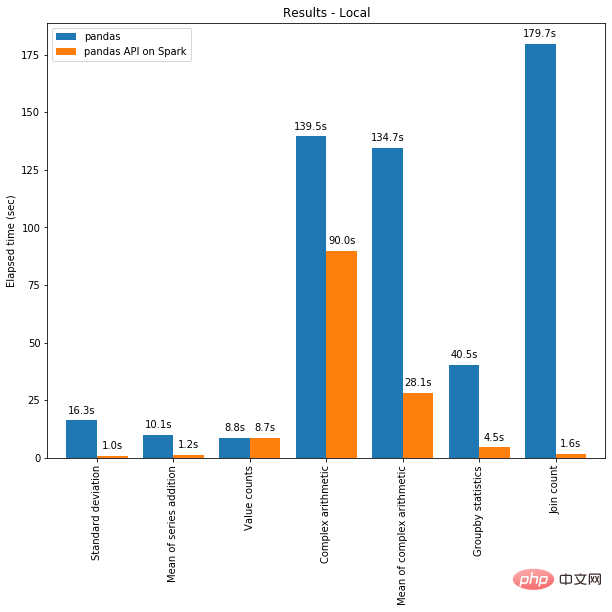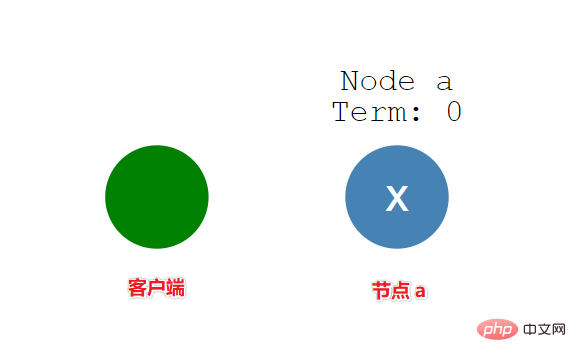The difference between distributed and microservices lies in definitions and concepts, design ideas, granularity and complexity, service boundaries and autonomy, technology stacks and deployment methods, etc. Detailed introduction: 1. Definition and concept. A distributed system is a system composed of multiple independent computers or computer networks. These computers communicate and coordinate through message passing to jointly complete a certain task or provide a certain service. The microservice architecture is An architectural style that splits an application into a set of small, independent services, each of which can be independently deployed, scaled, and managed, collaborate through lightweight communication mechanisms, and more.

Distributed and microservices are two design ideas commonly used in current software architecture. They can both be used to build complex application systems, but in the implementation method There are some differences in aspects such as , granularity and application scenarios. The following will compare distributed and microservices from different perspectives to help better understand the differences between them.
1. Definition and concepts:
- Distributed system: A distributed system is a system composed of multiple independent computers or computer networks that communicate and coordinate through message passing. Complete a task or provide a service.
- Microservice architecture: Microservice architecture is an architectural style that splits an application into a set of small, independent services. Each service can be independently deployed, expanded and managed through lightweight communication mechanism for collaboration.
2. Design idea:
- Distributed system: The design idea of a distributed system is to split a large system into multiple subsystems, each subsystem is responsible for different functions. Communicate and collaborate through message passing and remote calling to achieve system scalability and high availability.
- Microservice architecture: The design idea of microservice architecture is to split an application into multiple small services. Each service can be independently deployed, expanded and managed through asynchronous communication and API calls. Collaborate to achieve loose coupling and maintainability of the system.
3. Granularity and complexity:
- Distributed system: The granularity of a distributed system is relatively large. Each subsystem may contain multiple modules or components, and communication between subsystems and collaboration are more complex, and issues such as distributed transactions, consistency, and fault tolerance need to be considered.
- Microservice architecture: The granularity of microservice architecture is relatively small. Each service is usually only responsible for a specific business function. The communication and collaboration between services are relatively simple and can be independently developed, tested, deployed and Extension to facilitate collaborative development and rapid iteration of the team.
4. Service boundaries and autonomy:
- Distributed system: In a distributed system, the boundaries between subsystems are relatively blurred, and there may be shared databases, shared caches, etc. Negotiation and coordination are required between subsystems to ensure data consistency and reliability.
- Microservice architecture: In the microservice architecture, each service has clear boundaries. Each service can have its own database, cache and other resources. Services communicate through APIs. Each service All are autonomous and can be developed, tested, deployed and expanded independently.
5. Technology stack and deployment method:
- Distributed system: In distributed systems, RPC (remote procedure call), message queue and other technologies are usually used to implement communication between subsystems Communication and collaboration can be deployed in a centralized or distributed manner.
- Microservice architecture: In microservice architecture, RESTful API, message bus and other technologies are usually used to achieve communication and collaboration between services. Each service can be independently deployed in different containers or virtual machines. , you can use containerized deployment or cloud-native deployment.
To sum up, distributed systems pay more attention to the scalability and high availability of the overall system, while microservice architecture pays more attention to loose coupling and maintainability between services. Distributed system design is more suitable for large-scale complex systems, while microservice architecture is more suitable for agile development and rapid iteration scenarios. In actual applications, the appropriate architecture can be selected based on specific needs and system scale.
The above is the detailed content of The difference between distributed and microservices. For more information, please follow other related articles on the PHP Chinese website!
 PHP实现开源SeaweedFS分布式文件系统Jun 18, 2023 pm 03:56 PM
PHP实现开源SeaweedFS分布式文件系统Jun 18, 2023 pm 03:56 PM在分布式系统的架构中,文件管理和存储是非常重要的一部分。然而,传统的文件系统在应对大规模的文件存储和管理时遇到了一些问题。为了解决这些问题,SeaweedFS分布式文件系统被开发出来。在本文中,我们将介绍如何使用PHP来实现开源SeaweedFS分布式文件系统。什么是SeaweedFS?SeaweedFS是一个开源的分布式文件系统,它用于解决大规模文件存储和
 Pandas 与 PySpark 强强联手,功能与速度齐飞!May 01, 2023 pm 09:19 PM
Pandas 与 PySpark 强强联手,功能与速度齐飞!May 01, 2023 pm 09:19 PM使用Python做数据处理的数据科学家或数据从业者,对数据科学包pandas并不陌生,也不乏像云朵君一样的pandas重度使用者,项目开始写的第一行代码,大多是importpandasaspd。pandas做数据处理可以说是yyds!而他的缺点也是非常明显,pandas只能单机处理,它不能随数据量线性伸缩。例如,如果pandas试图读取的数据集大于一台机器的可用内存,则会因内存不足而失败。另外pandas在处理大型数据方面非常慢,虽然有像Dask或Vaex等其他库来优化提升数
 PHP中的分布式数据中心May 23, 2023 pm 11:40 PM
PHP中的分布式数据中心May 23, 2023 pm 11:40 PM随着互联网的快速发展,网站的访问量也在不断增长。为了满足这一需求,我们需要构建高可用性的系统。分布式数据中心就是这样一个系统,它将各个数据中心的负载分散到不同的服务器上,增加系统的稳定性和可扩展性。在PHP开发中,我们也可以通过一些技术实现分布式数据中心。分布式缓存分布式缓存是互联网分布式应用中最常用的技术之一。它将数据缓存在多个节点上,提高数据的访问速度和
 使用Redis实现分布式计数器May 11, 2023 am 08:06 AM
使用Redis实现分布式计数器May 11, 2023 am 08:06 AM什么是分布式计数器?在分布式系统中,多个节点之间需要对共同的状态进行更新和读取,而计数器是其中一种应用最广泛的状态之一。通俗地讲,计数器就是一个变量,每次被访问时其值就会加1或减1,用于跟踪某个系统进展的指标。而分布式计数器则指的是在分布式环境下对计数器进行操作和管理。为什么要使用Redis实现分布式计数器?随着分布式计算的普及,分布式系统中的许多细节问题也
 分布式系统必须知道的一个共识算法:RaftApr 07, 2023 pm 05:54 PM
分布式系统必须知道的一个共识算法:RaftApr 07, 2023 pm 05:54 PM一、Raft 概述Raft 算法是分布式系统开发首选的共识算法。比如现在流行 Etcd、Consul。如果掌握了这个算法,就可以较容易地处理绝大部分场景的容错和一致性需求。比如分布式配置系统、分布式 NoSQL 存储等等,轻松突破系统的单机限制。Raft 算法是通过一切以领导者为准的方式,实现一系列值的共识和各节点日志的一致。二、Raft 角色2.1 角色跟随者(Follower):普通群众,默默接收和来自领导者的消息,当领导者心跳信息超时的
 Redis实现分布式配置管理的方法与应用实例May 11, 2023 pm 04:22 PM
Redis实现分布式配置管理的方法与应用实例May 11, 2023 pm 04:22 PMRedis实现分布式配置管理的方法与应用实例随着业务的发展,配置管理对于一个系统而言变得越来越重要。一些通用的应用配置(如数据库连接信息,缓存配置等),以及一些需要动态控制的开关配置,都需要进行统一管理和更新。在传统架构中,通常是通过在每台服务器上通过单独的配置文件进行管理,但这种方式会导致配置文件的管理和同步变得十分复杂。因此,在分布式架构下,采用一个可靠
 Redis实现分布式对象存储的方法与应用实例May 10, 2023 pm 08:48 PM
Redis实现分布式对象存储的方法与应用实例May 10, 2023 pm 08:48 PMRedis实现分布式对象存储的方法与应用实例随着互联网的快速发展和数据量的快速增长,传统的单机存储已经无法满足业务的需求,因此分布式存储成为了当前业界的热门话题。Redis是一个高性能的键值对数据库,它不仅支持丰富的数据结构,而且支持分布式存储,因此具有极高的应用价值。本文将介绍Redis实现分布式对象存储的方法,并结合应用实例进行说明。一、Redis实现分
 PHP与数据库分布式的集成May 15, 2023 pm 09:40 PM
PHP与数据库分布式的集成May 15, 2023 pm 09:40 PM随着互联网技术的发展,对于一个网络应用而言,对数据库的操作非常频繁。特别是对于动态网站,甚至有可能出现每秒数百次的数据库请求,当数据库处理能力不能满足需求时,我们可以考虑使用数据库分布式。而分布式数据库的实现离不开与编程语言的集成。PHP作为一门非常流行的编程语言,具有较好的适用性和灵活性,这篇文章将着重介绍PHP与数据库分布式集成的实践。分布式的概念分布式

Hot AI Tools

Undresser.AI Undress
AI-powered app for creating realistic nude photos

AI Clothes Remover
Online AI tool for removing clothes from photos.

Undress AI Tool
Undress images for free

Clothoff.io
AI clothes remover

AI Hentai Generator
Generate AI Hentai for free.

Hot Article

Hot Tools

MinGW - Minimalist GNU for Windows
This project is in the process of being migrated to osdn.net/projects/mingw, you can continue to follow us there. MinGW: A native Windows port of the GNU Compiler Collection (GCC), freely distributable import libraries and header files for building native Windows applications; includes extensions to the MSVC runtime to support C99 functionality. All MinGW software can run on 64-bit Windows platforms.

mPDF
mPDF is a PHP library that can generate PDF files from UTF-8 encoded HTML. The original author, Ian Back, wrote mPDF to output PDF files "on the fly" from his website and handle different languages. It is slower than original scripts like HTML2FPDF and produces larger files when using Unicode fonts, but supports CSS styles etc. and has a lot of enhancements. Supports almost all languages, including RTL (Arabic and Hebrew) and CJK (Chinese, Japanese and Korean). Supports nested block-level elements (such as P, DIV),

WebStorm Mac version
Useful JavaScript development tools

Atom editor mac version download
The most popular open source editor

ZendStudio 13.5.1 Mac
Powerful PHP integrated development environment






